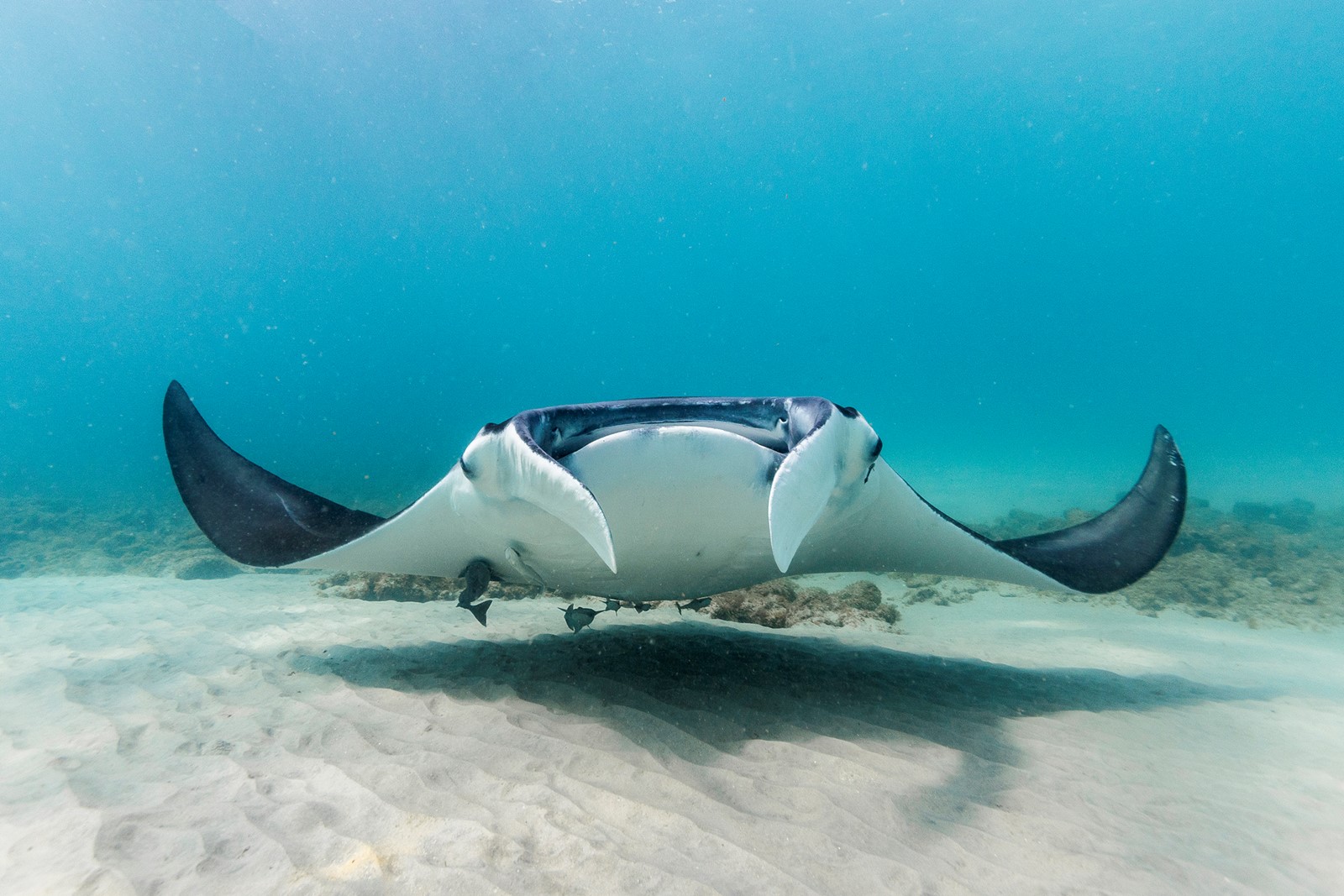
ORLANDO, Fla. — Denis Richard watched five men heave a giant manta ray from the waters off Panama City Beach and plop it into a pool on their boat deck.
“Let him go!” he yelled. “You ought to be ashamed of yourselves.”
Richard, a dolphin tour boat operator, was outraged a threatened species often called the “angel of the sea” could be plucked from Florida’s waters. But the capture was legal: State wildlife officials issued a special permit allowing a giant manta ray to be taken for SeaWorld Abu Dhabi, which bills itself as the world’s largest indoor marine life theme park.
The park in the Middle East — about 7,800 miles away from the manta ray’s Florida home — contracted with a Florida Keys aquarium supplier to capture the creature, according to records obtained by the Orlando Sentinel. The fate of the manta ray could not be determined as neither SeaWorld Abu Dhabi nor the supplier responded to requests for information.
Video footage of the animal’s July 12 capture, posted online, has reignited debate over whether these intelligent, migratory creatures belong in captivity. Just a handful of aquariums in the world display manta rays, and Florida is the only U.S. state that allows their harvest, according to a 2024 federal report. Richard, founder and CEO of the Water Planet USA dolphin tour company, said he witnessed the capture while leading a tour, and one of his crew members filmed it.
He initially thought the men had caught a shark until he saw the winged body struggling in the net. His concern grew when he later learned the manta ray appeared destined for the aquarium in the United Arab Emirates.
“The risks of that manta ray being traumatized and possibly dying in that process are very high because they are a very sensitive species,” Richard said.
Known for impressing divers with its graceful movements, the giant manta ray is classified as a threatened species under the U.S. Endangered Species Act. With a wingspan up to 26 feet, it can grow to 5,300 pounds, about as much as a car.
Florida generally prohibits catching manta rays. But the state can authorize a special license to capture them for educational, exhibition and research purposes with the objective of increasing “the public’s knowledge and awareness of Florida’s marine resources.”
The July 12 capture was authorized under such a license issued by the Florida Fish and Wildlife Conservation Commission. The agency permitted the collection of one giant manta ray from state waters for exhibition purposes, according to the company’s license, which was valid for a year starting Nov. 1.
Over the past two years, state wildlife officials have issued four such licenses to various entities, agency spokeswoman Shannon Knowles said in a statement. One manta ray died shortly after being taken into captivity, she said.


 PREVIOUS ARTICLE
PREVIOUS ARTICLE
